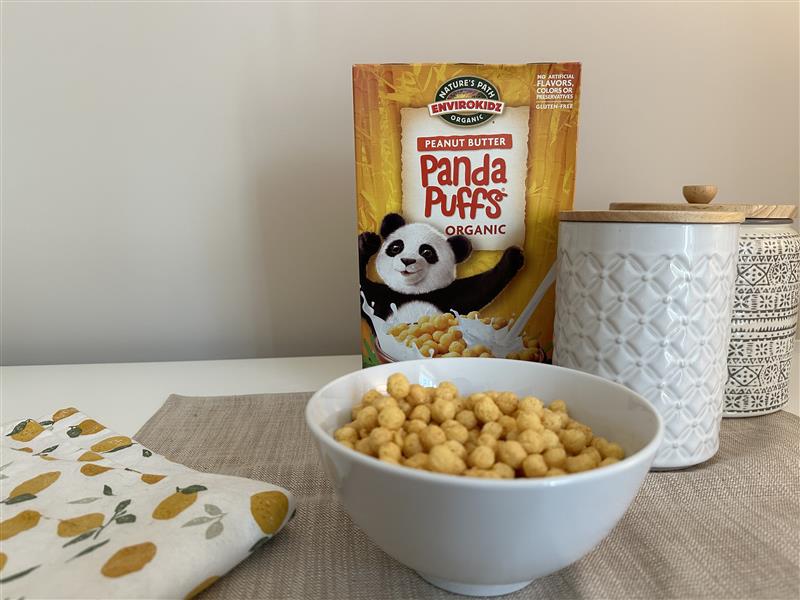
Pulling Back the Curtain on Artificial Dyes
At Nature’s Path, we’ve been listening. The conversation around artificial food colorings, with Red Dye 40 taking the spotlight, is louder than ever. As the push against big-name food brands using artificial dyes gains momentum, our commitment to organic foods and sustainability drives us to share what we know about ingredients and the wholesome alternatives that exist.
What is Red Dye 40?
Red Dye 40 is a synthetic dye has been on ingredient lists within the United States for many years. Derived from petroleum, it’s widely used to make food look more appealing, especially in cereals aimed at kids. Although the FDA has approved its use, numerous studies raise questions about its impact on health.
- Hyperactivity and Behavioral Concerns: Research links artificial food colorings, including Red Dye 40, and increased hyperactivity in children. Research published in journals such as the National Library of Medicine indicates that certain food dyes can exacerbate attention problems, leading to concerns among parents and health professionals alike. *
- Allergic Reactions: While rare, some individuals may experience allergic reactions to Red Dye 40. Symptoms can include hives, asthma, and other respiratory issues.**
- Carcinogenic Effects: Ongoing debates surround the safety of synthetic dyes, with some research suggesting that long-term consumption may increase cancer risks.*** Although this is still up for debate, the potential health risks are enough to cause concern – especially when it comes to products marketed toward kids.
- Environmental Impact: The production of synthetic dyes like Red Dye 40 has environmental consequences, including pollution from manufacturing processes****. By choosing alternatives, you can also take a stand for sustainability.
The Growing Boycott Against Artificial Dyes
As awareness of these health risks has grown, an increasing number of consumers are advocating for change. Influencers, celebrities, and health advocates are calling on major food companies to eliminate artificial dyes from their products. Notable campaigns have emerged, urging popular brands to reformulate their cereals and snacks to use natural colors from fruit and vegetables.
Looking Beyond Red Dye 40: What Else?
While it’s encouraging that consumers are educating themselves and taking a stand against artificial dyes as an ingredient, at Nature’s Path we believe it’s important to dig deeper and understand all the ingredients in the foods we consumer and know how they’re made. Which leaves us asking, “What else?”
We know that Red Dye 40 is just the tip of the iceberg as parents educate themselves on the foods their children are consuming. Many popular breakfast cereals and snack foods marketed by Big Food are manufactured with ingredients that have been grown using toxic pesticides and herbicides, contain GMOs, and are loaded with artificial flavors and preservatives – all contributing to many of the same health concerns as Red Dye 40. Additionally, there are three other U.S. approved artificial dyes that are believed to carcinogenic or cause hypersensitivity reactions.***** These include Yellow Dye 5, Yellow Dye 6, and Blue Dye 1.
Whole Foods and Better-for-You Options
Eating organic fruits, veggies, and grains is always a top choice for health, but we know that busy lifestyles call for convenient options. As North America’s largest organic breakfast and snack food company, Nature’s Path is committed to our purpose of leaving the Earth better than we found it through creating food that’s organic, nutrient-rich, and delicious.
Our EnviroKidz cereal line offers nine kid-friendly flavors made with natural dyes and flavors from fruit juices. Red Panda Puffs is the brand’s newest flavor combining peanut butter and strawberry. These delicious pink puffs use strawberry and beet juice for their unmistakable color and flavor. Berry flavored Cheetah Chomps are made with organic fruit and veggies including raspberries, strawberries, and carrots and are a gluten-free, non-GMO option.

EnviroKidz is not just a better-for-you, organic kids’ breakfast cereal. For every box sold, a portion of sales are donated to support endangered species, habitat conservation, and environmental education for kids worldwide. Since the introduction of EnviroKidz in 2000, Nature’s Path has donated over $5 million to these organizations.
Other Nature’s Path options include Panda Puffs, Crispy Rice Cereal and Honey’D Corn Flakes. All are better-for-you gluten-free, non-GMO breakfast choices.
The artificial dye movement is important and will help contribute to transparency and positive change among Big Food manufactures. But as we continue to push for a food future that values health and well-being above all else, we'll continue to ask, “what else?” because we believe that prioritizing health and well-being, one ingredient at a time, makes all the difference.
Sources
***National Library of Medicine
****Culinary Solvent







